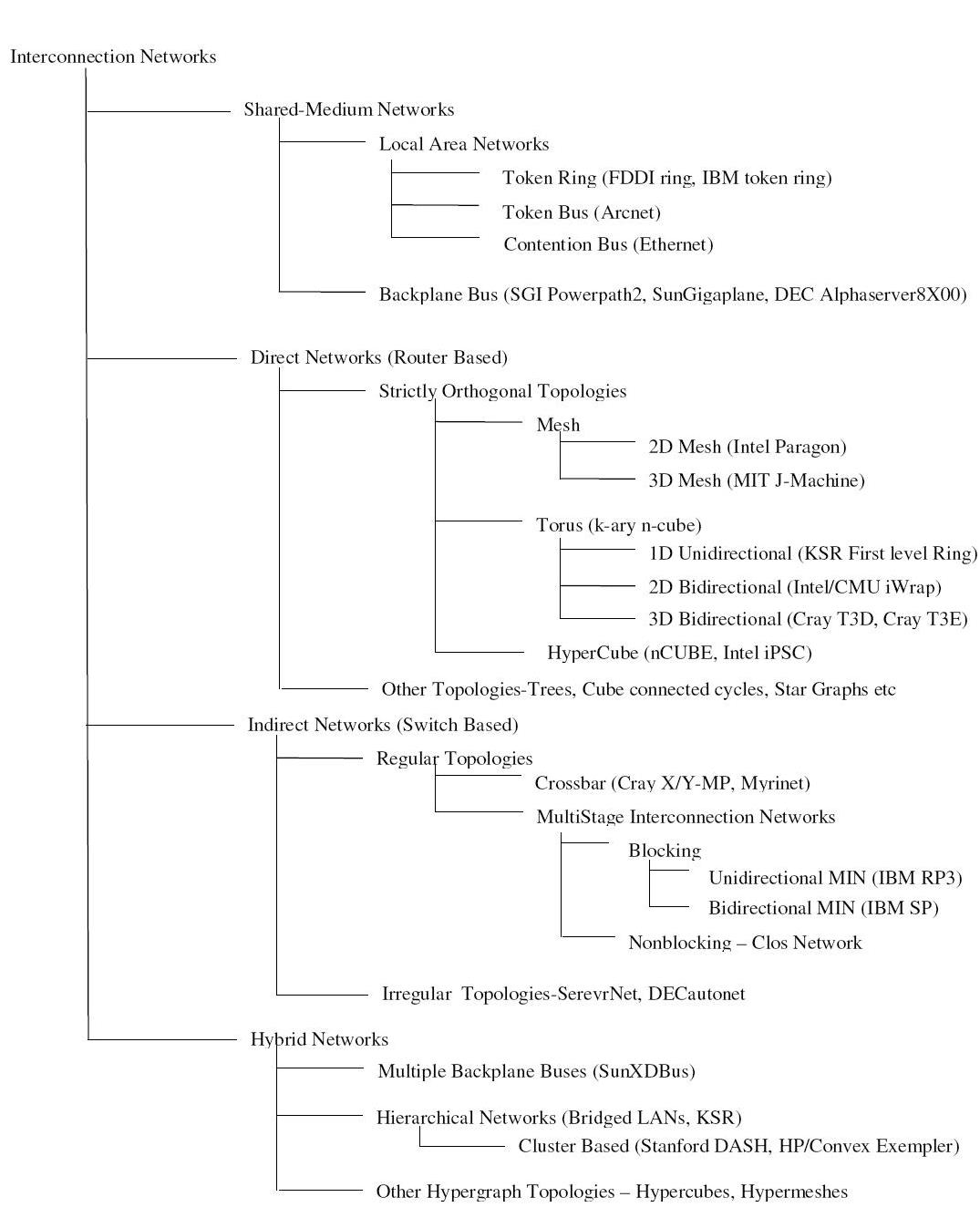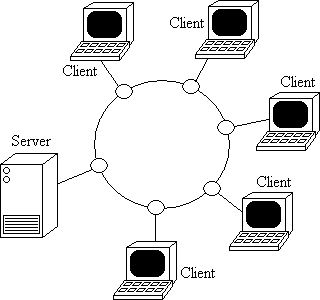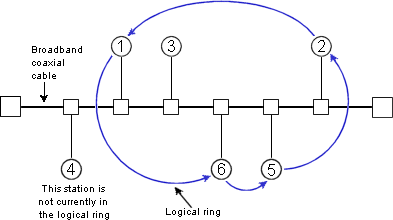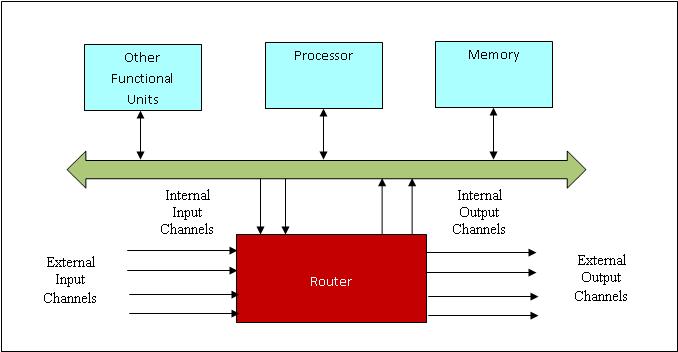CSC/ECE 506 Spring 2010/ch 12 PP: Difference between revisions
| Line 92: | Line 92: | ||
Bus based systems are not scalable since bus becomes a bottleneck when more processors are added. Direct network or point to point network scales well with large number of processors. A direct network consists of a set of nodes, each directly connected to a subset of other nodes. Figure__ shows a generic node. | Bus based systems are not scalable since bus becomes a bottleneck when more processors are added. Direct network or point to point network scales well with large number of processors. A direct network consists of a set of nodes, each directly connected to a subset of other nodes. Figure__ shows a generic node. | ||
[[Image:Node.jpg]] | |||
Each Router is connected to its neighbor’s routers through a unidirectional or bidirectional channel and handles the message communication among nodes. | Each Router is connected to its neighbor’s routers through a unidirectional or bidirectional channel and handles the message communication among nodes. | ||
Revision as of 18:53, 23 April 2010
Interconnection Networks
Choosing the “Best” Network
While there is no best network that would work well for all applications, it greatly depends on the given application and the parallel system at hand. The following are some of the factors affect the choice of interconnection network.
1. Performance Requirements: Minimize message latency, avoid network from saturating (unable to deliver messages injected by nodes) and increase throughput of the network.
2. Scalability: Adding more processors should increase I/O bandwidth, Memory Bandwidth and Network Bandwidth should increase proportionally.
3. Incremental expandability: Should provide incremental expandability, allowing addition of a small number of nodes while minimizing resource wastage. For example, a network designed for number of processors to be a power of 4 makes it difficult to expand.
4. Partitionability: May be required for security reasons. If network can be partitioned into smaller systems, traffic produced by one user will not affect the others.
5. Simplicity: Simple Design lead to higher clock frequencies and better performance.
6. Distance Span: Maximum distance between nodes should be small.
7. Physical Constraints: Complexity of the connection is limited by the maximum wire density possible and by the maximum pin count. Factors like packaging, wiring, operating temperature should be taken into account since they pose many limitations on designs.
8. Reliability and Reparability: Should allow easy upgrades and repairs. Should minimize faults or detect them and correct them.
9. Expected Workloads: If kind of application is known in advance, network can be optimized for it. If not, network should be robust, design paramenters should be selected to perform well over a wide range of traffic conditions.
10. Cost Constraints: The “best” network might be too expensive. Alternative design considerations are important to meet cost constraints.
Classification of Interconnection networks
Figure 1 classifies Interconnection Networks based on network topologies. For each class, figure shows hierarchy of subclasses with some real implementations in parenthesis. In Shared-Medium Networks, transmission medium is shared by all devices. Direct Networks have point to point links directly connecting each communicating device to a subset of other devices in the network. Indirect networks connect devices using one or more switches. Hybrid networks are a combination of the above approaches.

Token Ring
Implementation examples:
- IBM token ring: Supports bandwidth of 4 or 16 Mbps based on coaxial tube
- FDDI: Bandwidth of 100Mbps using fiber optics
Token Bus
Nodes are physically connected as a bus, but logically form a ring with tokens passed around to determine the turns for sending. A token is passed around the network nodes and only the node possessing the token may transmit. If a node doesn't have anything to send, the token is passed on to the next node on the virtual ring.
Implementation examples:
- ARCNET: Attached Resource Computer NETwork
Backplane Bus
Simplest interconnection structure for bus-based parallel computers. Commonly used to connect processors and memory modules to form UMA architecture. Many techniques are used for information transfers like synchronous, asynchronous, multiplexed and non-multiplexed.
Implementation examples:
- Gigaplane used in Sun Ultra Enterprise X000 Server (ca. 1996): 2.68 Gbyte/s peak, 256 bits data, 42 bits address, split transaction protocol, 83.8 MHz clock
- DEC AlphaServer8X00, i.e. 8200 & 8400 (ca. 1995): 2.1 Gbyte/s, 256 bits data, 40 bits address, split transaction protocol, 100 MHz clock (1 foot length)
- SGI PowerPath -2 (ca. 1993): 1.2 Gbyte/s, 256 bits data, 40 bits address, 6 bits control, split transaction protocol, 47.5 MHz clock
- HP9000 Multiprocessor Memory Bus (ca. 1993): 1Gbyte/s, 128 buts data, 64 bit address, 13 inches, pipelined bus, 60 MHz clock
Direct Networks
Bus based systems are not scalable since bus becomes a bottleneck when more processors are added. Direct network or point to point network scales well with large number of processors. A direct network consists of a set of nodes, each directly connected to a subset of other nodes. Figure__ shows a generic node.
Each Router is connected to its neighbor’s routers through a unidirectional or bidirectional channel and handles the message communication among nodes.



